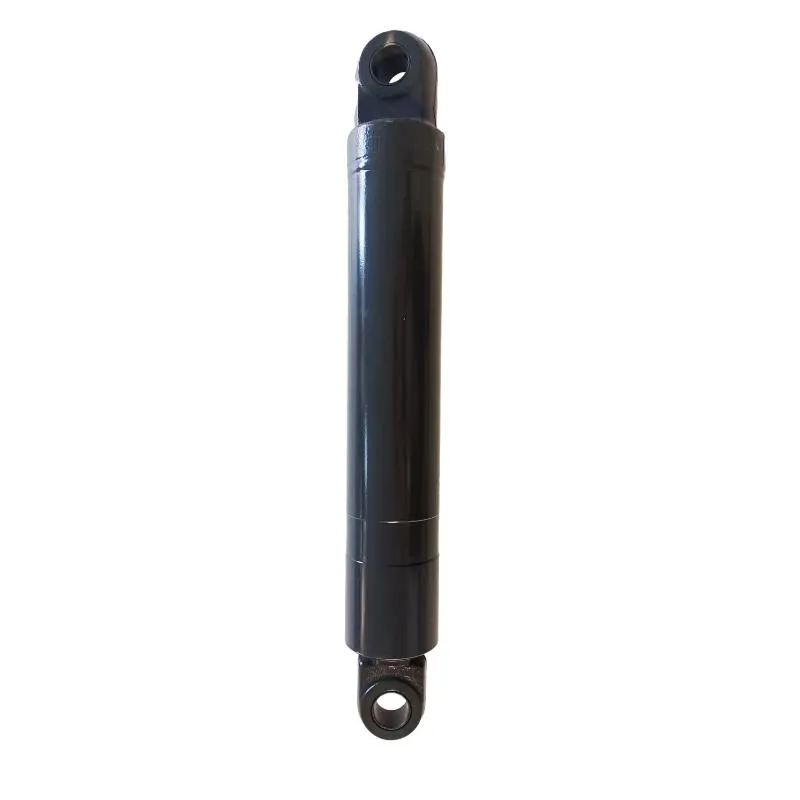Aug . 13, 2024 03:12 Back to list
Advanced Dual Rod Hydraulic Cylinder for Enhanced Performance and Durability in Industrial Applications
Understanding Dual Rod Hydraulic Cylinders
Hydraulic cylinders are essential components in various industrial applications, providing the necessary force and motion to power different machinery and equipment. Among the different types of hydraulic cylinders, the dual rod hydraulic cylinder stands out due to its unique design and efficiency in performance.
What is a Dual Rod Hydraulic Cylinder?
A dual rod hydraulic cylinder features two rods extending from either end of the cylinder, unlike traditional single rod cylinders where only one rod is present. This design offers several advantages, making dual rod cylinders particularly suited for specific operational requirements.
Advantages of Dual Rod Hydraulic Cylinders
1. Balanced Force Distribution The dual rod design allows for a more balanced distribution of force. With two rods, the cylinder can handle external loads more evenly, reducing the risk of bending or misalignment. This is particularly advantageous in heavy-duty applications where precision and stability are paramount.
2. Increased Stability The dual rods prevent lateral movement and enable the cylinder to maintain its position more effectively during operation. This stability is crucial for applications that require a high degree of accuracy, such as in robotic arms or assembly lines.
3. Enhanced Performance Dual rod hydraulic cylinders can often achieve a higher performance level due to their design. With the ability to generate force from both ends, they can react quickly to changes in load and maintain consistent performance under varying conditions.
4. Reduced Wear and Tear The balanced load and stability provided by dual rods reduce wear and tear on the cylinder’s components. This can lead to an extended lifespan for the hydraulic cylinder and lower maintenance costs over time.
dual rod hydraulic cylinder product

5. Versatile Applications Dual rod hydraulic cylinders are used in a wide range of applications, including construction equipment, automotive machinery, material handling systems, and manufacturing processes. Their ability to manage heavier loads makes them ideal for industries where precision and strength are essential.
Design and Construction
The construction of a dual rod hydraulic cylinder typically involves high-grade materials that can withstand high pressures and harsh operating conditions. The rods are often plated or treated to resist corrosion and wear, extending their operational life. The cylinder itself is sealed using advanced sealing technologies to prevent hydraulic fluid leaks, which is crucial for maintaining performance efficiency and environmental safety.
Applications in Industry
Dual rod hydraulic cylinders are commonly found in applications where double-ended force is required. For example, in automated manufacturing lines, these cylinders can efficiently push and pull objects with great precision. In construction, they can be employed in excavators, where the ability to maintain stability while operating under heavy loads is necessary.
In the automotive industry, dual rod cylinders are used in assembly processes requiring accurate positioning of components. Their ability to absorb shock and distribute loads evenly makes them vital in ensuring the integrity and safety of machinery.
Conclusion
In summary, dual rod hydraulic cylinders offer a range of advantages, including balanced force distribution, increased stability, enhanced performance, and versatility across various applications. Their unique design allows them to perform efficiently and reliably in demanding industrial environments. As industries continue to evolve and require more sophisticated solutions, dual rod hydraulic cylinders will undoubtedly play a crucial role in meeting those demands. Whether in construction, manufacturing, or automotive applications, these hydraulic cylinders provide an effective means to harness hydraulic power and drive innovation across multiple sectors.
-
1.5 Ton Flipping Oil Cylinder 70/82-40-217-720-Hebei Shenghan Hydraulic Machinery|Precision Hydraulic Cylinder,Custom Hydraulic Solutions
NewsAug.29,2025
-
1.5 Ton Flipping Oil Cylinder 70/82-40-217-720 | Hebei Shenghan Hydraulic Machinery Co., Ltd.
NewsAug.29,2025
-
High-Precision [90/105-50-180-480] Industrial Component | Durable & Reliable
NewsAug.27,2025
-
High-Performance Set of 50/60-45-290 471 | Durable & Reliable Components
NewsAug.26,2025
-
Efficient Pallet Truck Power Units - Reliable Hydraulic Systems
NewsAug.25,2025
-
Premium Set of 50/60-45-290 471 Parts | High Performance
NewsAug.24,2025
